Cochineal
A Product of Nature
Cochineal, Dactylopius coccus, is a small scale insect native to subtropical South America through the Southwest United States that lives in stationary clumps on nopal, prickly pear cacti of the genus Opuntia.
The word cochineal is derived from the Latin word “coccinus” meaning “scarlet-colored,” a reference to carminic acid, a red-hued chemical produced by female cochineals and their eggs which is used to make a vibrant red dye.
Indigenous people in Puebla, Tlaxcala and Oaxaca devised complex systems to cultivate and harvest both the insect and its host cactus to produce the pigment for dyeing fiber, a process that required an in-depth knowledge of the natural history of both the insect and cactus.
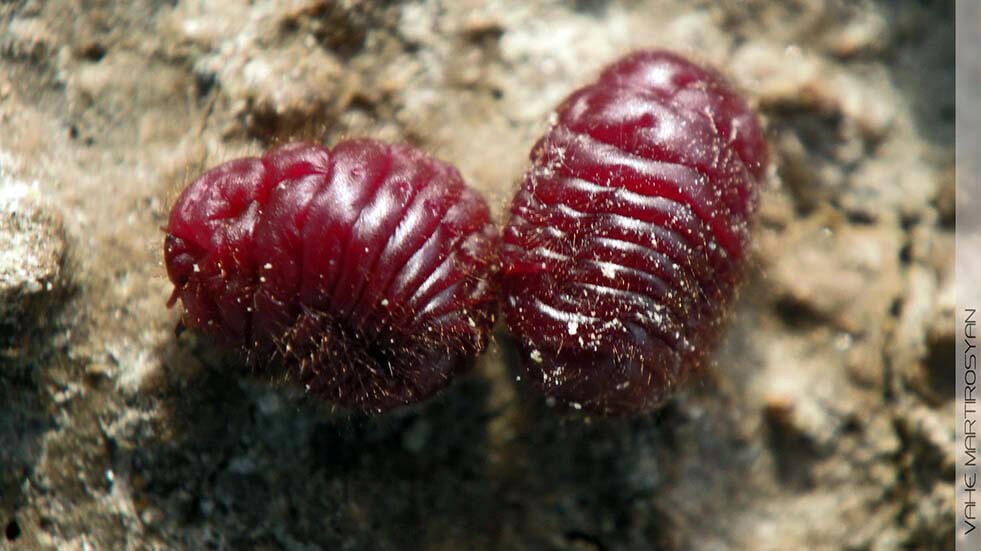
Cochineal, Dactylopius coccus
Cochineal insects are tiny, soft-bodied, flat, oval-shaped scale insects. Wingless females like these cluster together on cactus pads, penetrating the cacti’s flesh to feed on its juices using beak-like mouthparts.
Photo by Vahe Martirosyan, CC BY 2.0
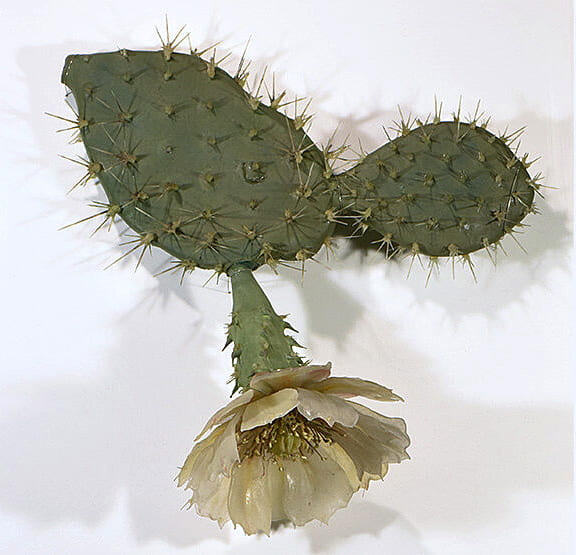
Prickly Pear Cactus, Opuntia phaecantha
Cochineal insects feed on virtually any of the more than 200 species of prickly pear cacti. This glass model, made by glass artist Rudolf and Leopold Blaschka, depicts one such species, Opuntia phaeacantha.
The Ware Collection of Blaschka Glass Models of Plants, Harvard University Herbaria © President and Fellows of Harvard College
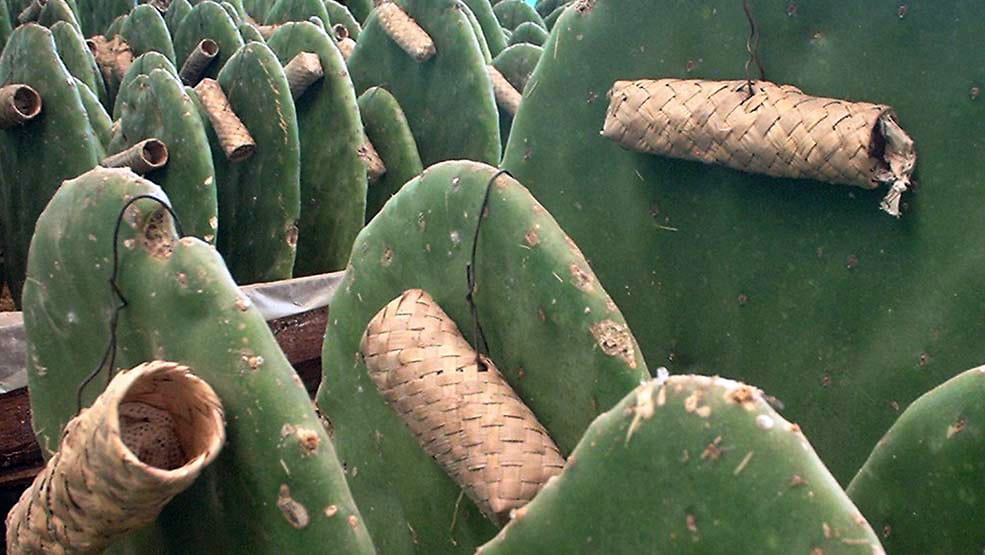
Nopalries
Cochineal and their host cacti are cultivated together on farms called nopalries. Cactus pads are infected by hanging small baskets call Zapotec nests from them, seen here, which contain fertile females.
Photo by Oscar Carrizosa, CC BY-SA 3.0
Infection
Flightless females mate with winged males and give birth to tiny nymphs that secrete a white, waxy substance over their bodies to protect from excessive sun and water loss.
Photo by Katja Schulz, CC BY 2.0
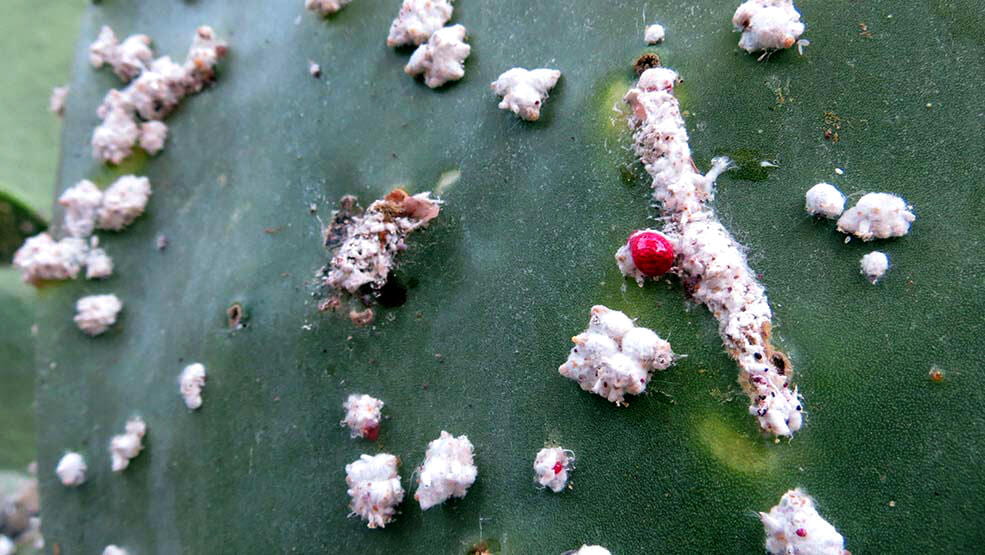
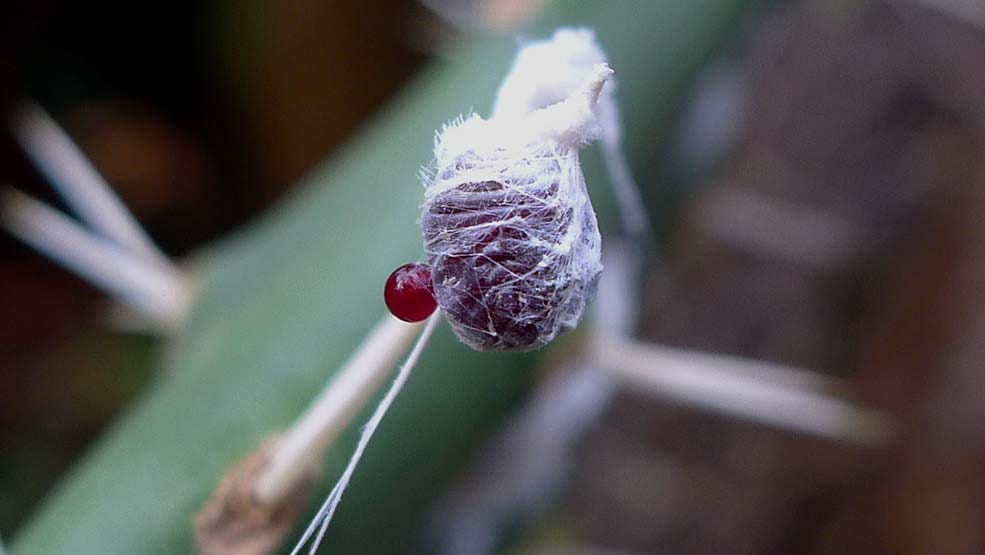
Carmine Acid
Females and their eggs produce a red chemical, carminic acid, to deter insect predators. This is the key ingredient for producing the highly coveted vibrant red dye.
Photo by gailhampshire, CC BY 2.0

Ripe for Harvest
Cochineal are harvested from nopal pads after about 90 days. This is a labor-intensive process where farmers individually knock, brush or pick females and their eggs from the cacti, collecting them by the thousands.
Photo by Zyance, CC BY-SA 2.5
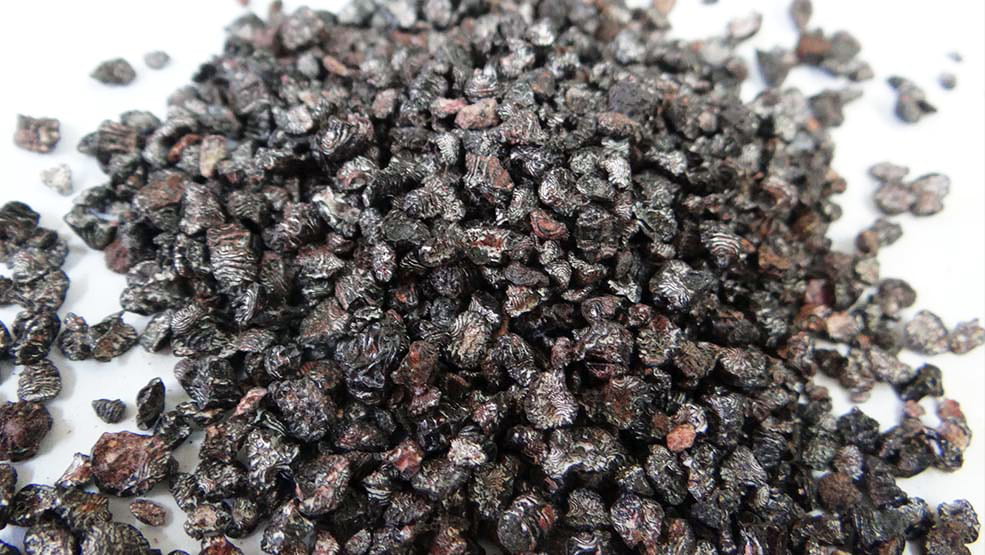
Dried Cochineal
Cochineal are killed by boiling them in water, and then sun-dried to about 30% of their body weight.
Photo by یردیح ایور, CC BY-SA 3.0
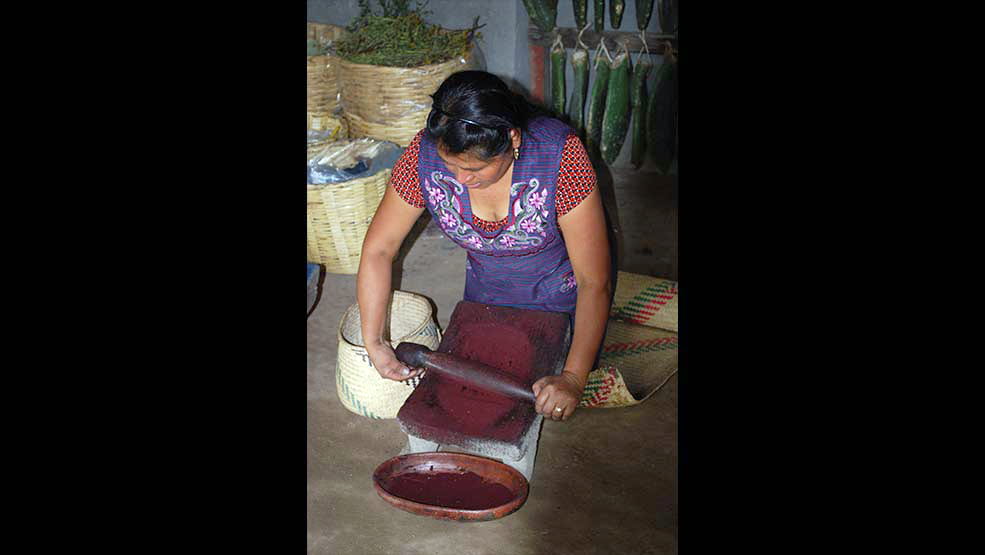
Grinding to a Powder
The dried insects are ground to a fine red powder, which is collected for further processing. It takes about 70,000 insects to make one kilogram of dye.
Photo by Thelmadatter, CC BY-SA 4.0
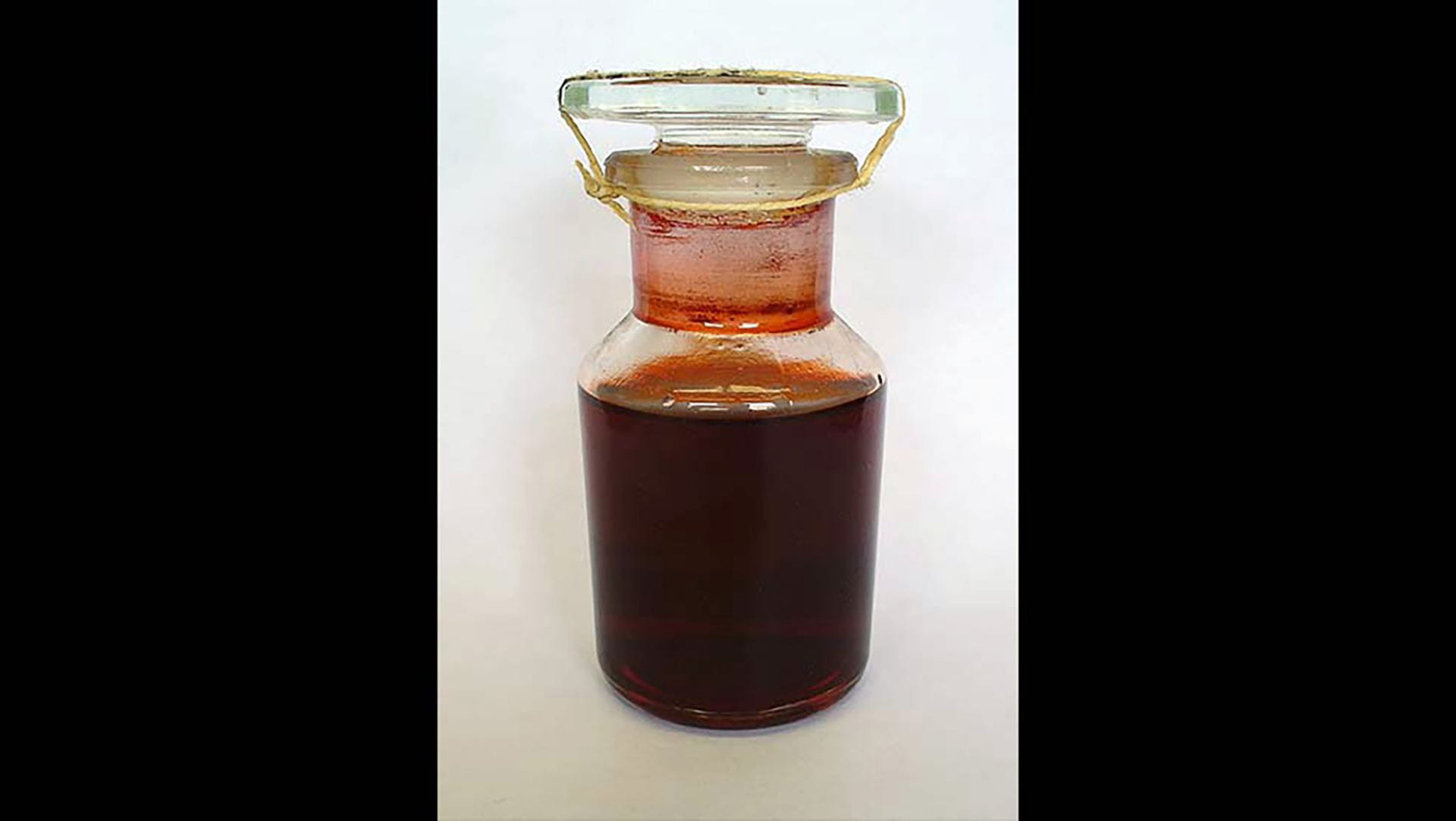
Making the Dye
Carmine, the primary ingredient in red dye, is extracted by boiling the powdered insect bodies in water. Different chemicals are added to the solution, depending on the shade of red desired.
Photo by H. Zell, CC BY-SA 3.0